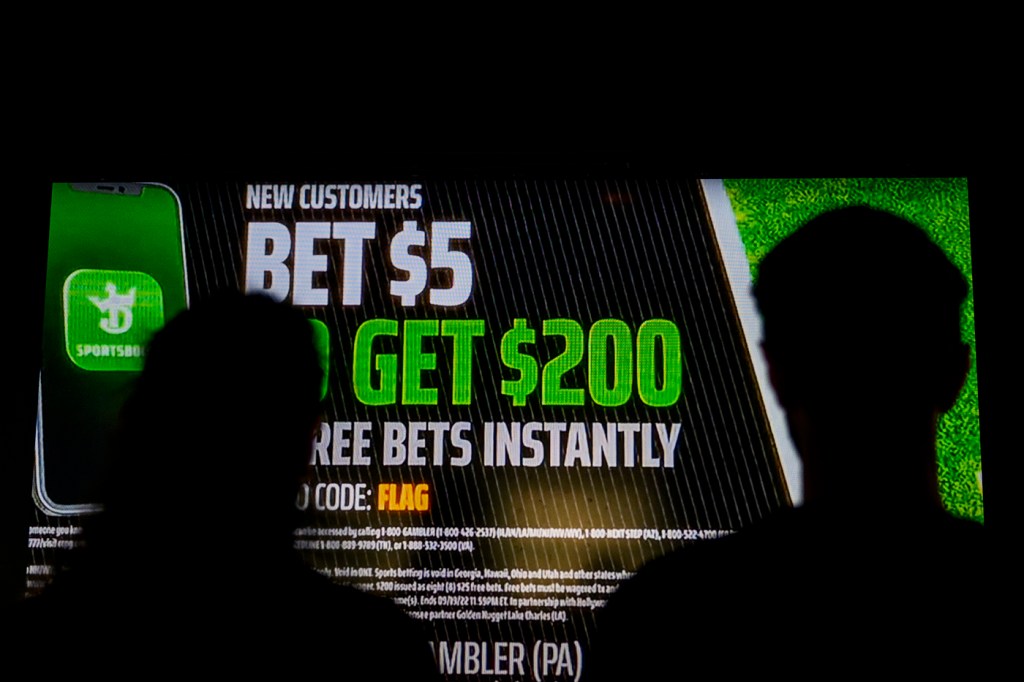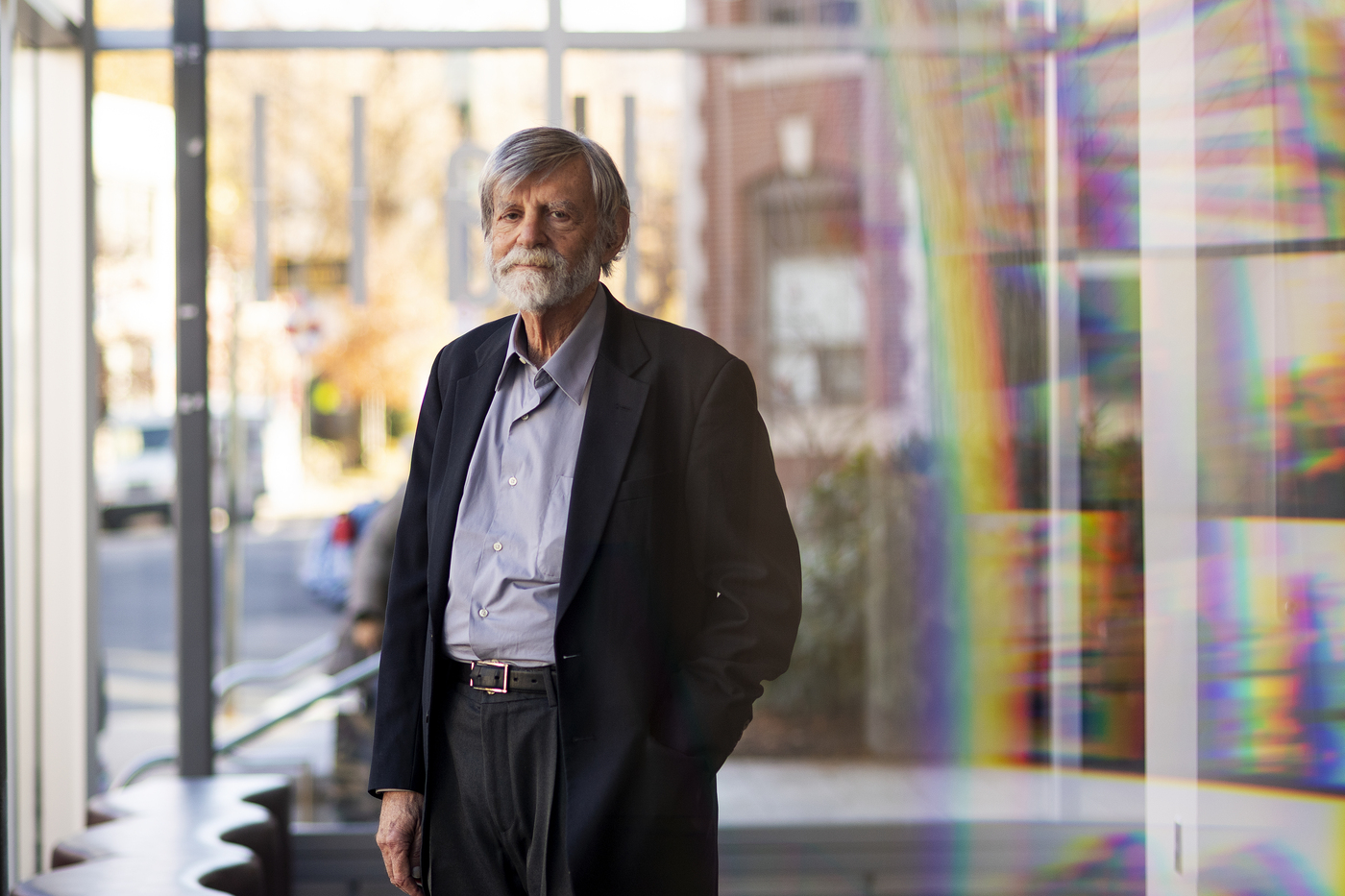Ads for sports betting have been more effective than the original cigarette campaigns, Northeastern expert says

The U.S. has been inundated with ads for sports betting since the 2018 Supreme Court ruling that legalized the industry.
Richard Daynard, who has spent much of his career establishing the legal responsibilities of the tobacco industry, says the nascent marketing for sports betting has been more effective than the early campaigns for cigarette smoking.
“The original Camels advertising around 1913 was, I believe, the first mass marketing campaign for any product,” says Daynard, university distinguished professor of law at Northeastern. “In the 1920s Lucky Strike began an effective campaign to get women to smoke. In the 1950s Marlboro adopted the powerful cowboy theme. In the 1980s the Joe Camel campaign openly appealed to teenagers.

“All four campaigns produced dramatic increases in smoking,” Daynard says. “But I doubt that any of them equaled the effect that the saturation advertising campaigns by several mobile sports betting companies have had in the past few months in creating a massive market for a previously nonexistent product category.”
In 1984 Daynard co-founded the Tobacco Products Liability Project, a legal-resource group that helped deliver liability verdicts to smokers and their families—with the ultimate goal of preventing young people from becoming addicted to cigarettes. In 2006 it merged with the School of Law’s Public Health Advocacy Institute, of which Daynard is president. Gambling is among several public issues that the institute is addressing.
Close to $300 million was spent last year on TV ads for sports gambling—a figure that promises to be eclipsed this year. All but 15 states have legalized sports betting, which historically had been permitted solely in Nevada.
“This is a public health crisis,” U.S. Rep. Paul Tonko, a Democrat from New York, told The Athletic. Added Tonko, who has proposed a ban on the ads: “What we’ve done is simply displace Joe Camel with this activity.”
Daynard spoke with Northeastern Global News about the similarities between the cigarette and sports-betting industries as well as the difficulties in trying to limit them. His comments have been edited for brevity and clarity.
What were the original ad strategies of the cigarette industry?
The Camel newspaper advertisements began in 1913 by announcing, “the camels are coming,” with a picture of camels, and that would go on for a week or two. Later the ads listed a particular date saying, “The camels will be here.” And then on that day, the ads became advertisements for Camel cigarettes. It was very effective.
The industry had the problem that women weren’t smoking, so you had Sigmund Freud’s nephew, Edward Bernays—who was called the father of public relations—he had women marching down Fifth Avenue on the Easter Parade in 1929 carrying cigarettes as torches of freedom.
The Joe Camel campaign became an outright pitch to kids. You also had the Marlboro Man as the iconic cowboy, the man who makes his own choices and nobody tells him what to do.
How does smoking relate to sports betting?
The reason people keep smoking is because they get addicted. Gambling is the same thing.
The gambling industry had a phrase: They wanted players to “play to extinction”—not meaning death but running out of all their money. When they’ve transferred their money to the gambling casino, the casino has done its thing.
What’s happening with sports betting now is that you’re able to gamble on the next play. So what you have is something that is similar to betting on slot machines, where people are sitting there just riveted. Hour after hour they’re in that zone, not focused on anything else, and it has been studied as an addictive behavior.
How successful has the sports-betting industry been?
In Massachusetts, for example, they got the go-ahead [when sports betting was legalized] on March 10. By the end of March there had been over $500 million bet in Massachusetts. Over $100 million of that went to the gambling operators.
Who is opposing the gambling industry?
There has been essentially no organized opposition to the gambling interests. So they talk to the Massachusetts legislature or other bodies—and there’s nobody on the other side. Because how is a state senator or representative supposed to know?
We’re here, but there aren’t many groups who are trying to present the downside to the legislatures. In Massachusetts, of the $100-plus million in revenue in March, $20 million went to the state. But the harm to the state and its people is going to turn out to be much greater than that.
What makes the ads so effective for sports-betting companies?
A lot of them offer a “free” something or other, which is deceptive. But they are rarely offering you free money. Some have offered $1,000 of your losses back, but you have to bet $30,000, $40,000, $50,000 or more.
What about the use of celebrities in these ads?
Obviously that makes it all the worse. My understanding is if you’re into celebrities—you think they’re fabulous, you want to be like them—and then they tell you this is the thing to do? It becomes a statement of “this is what I do.”
Whether these celebrities are actually making bets, I don’t know.
Is it surprising that athletes are endorsing sports betting?
I think I know the reason some of them endorse it. It’s this thing. (Daynard raises his wallet.)
Sports figures, historically, weren’t supposed to be betting. There was supposed to be an absolute separation because of concerns about corruption. So, presumably, these are not people who have been betting for most of their lives.
Not only have they sold out, so have the leagues—the NFL, Major League Baseball. All of them had been fiercely anti-gambling until very recently. They saw it as the antithesis of what sports was supposed to be about. And then they got bought off. So it’s hard to blame the athletes when their employers are the model for them on selling out.
Which regulations would be effective in the U.S.?
You could ban advertising on all sports betting. Or you could ban the use of endorsers and so forth. But the problem with doing anything short of banning all advertisements is that you’re always fighting last year’s war.
It takes a long time to get legislation through. And then when it’s passed there are 30 other things up their sleeve. There are lots of ways to do an advertising campaign.
What were the effects of advertising regulations on the cigarette industry?
Radio and television advertising was taken off in the early 1980s—at the request of the cigarette industry. And the reason was because of something called the Fairness Doctrine that the Federal Communications Commission applied: For every three cigarette ads, there had to be one counter ad. And some of the counter ads were quite effective. They pointed out that this is real, that smoking really does cause lung cancer, that family members were dying prematurely.
So the industry suggested to the Congress that radio and television advertising for cigarettes was inappropriate. Congress fell for the bait and decided, “These guys have gotten religion.”
The cigarette industry moved their ads to the back covers of magazines. Because if you drop the magazine on your living room table, it’s a 50% probability that the cigarette ad will be facing up. They also advertised on the tops of taxi cabs and on billboards. So they were doing fine without radio and television.
As a result of lawsuits brought by the states there was something called the Master Settlement Agreement in 1998. By 2000 they were off the back covers of magazines, billboards and taxi cabs. And that pretty much did it in terms of their marketing. And so cigarette consumption in the United States has been dropping quite dramatically.
Among kids it went down to 5 or 6 percent. And it would have probably kept dropping but for the fact that JUUL was able to sneak in and get kids hooked on nicotine with a marketing program that was clearly designed for adolescents.
Ian Thomsen is a Northeastern Global News reporter. Email him at i.thomsen@northeastern.edu. Follow him on Twitter @IanatNU.






